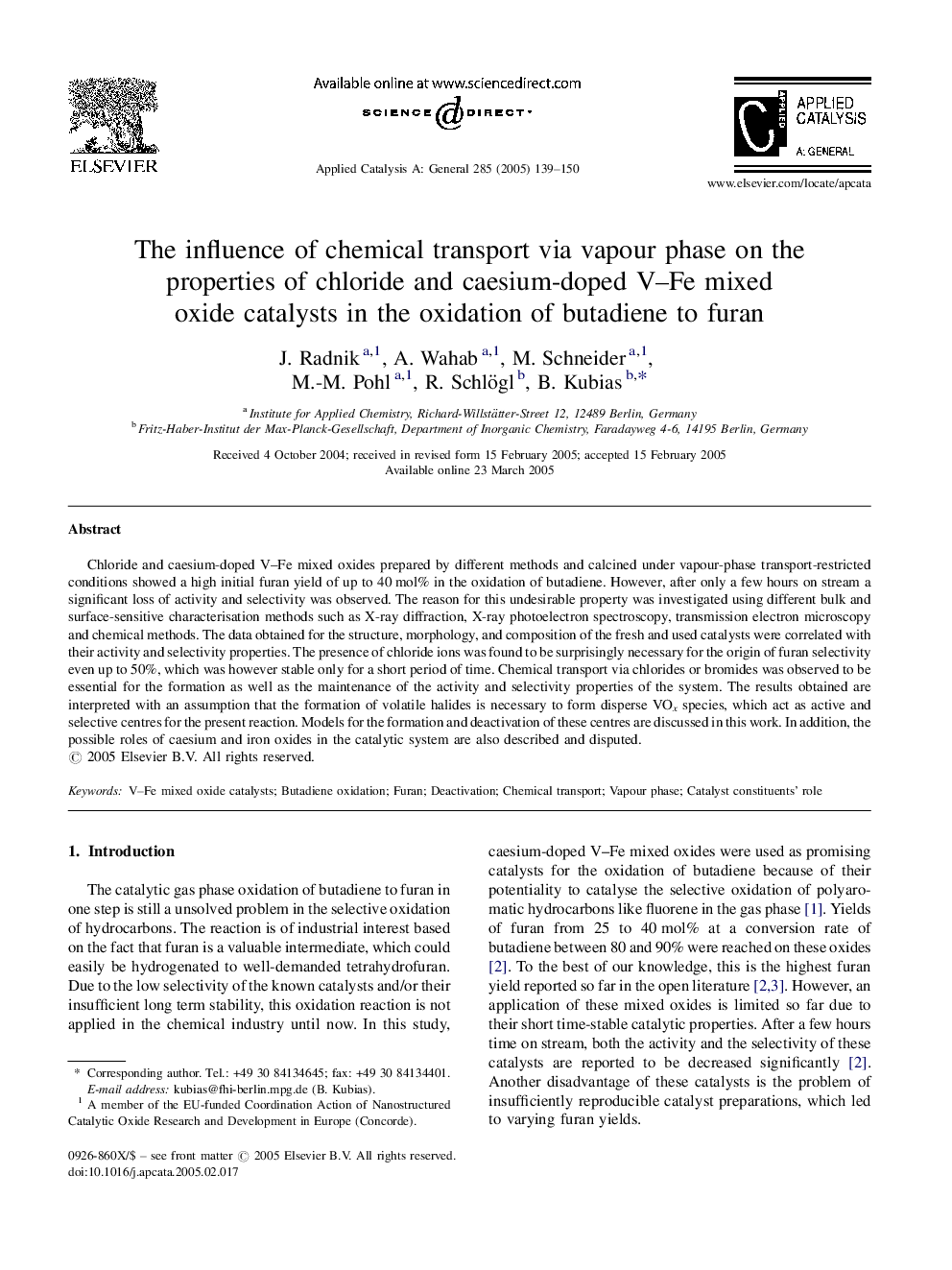| Article ID | Journal | Published Year | Pages | File Type |
|---|---|---|---|---|
| 9607955 | Applied Catalysis A: General | 2005 | 12 Pages |
Abstract
Chloride and caesium-doped V-Fe mixed oxides prepared by different methods and calcined under vapour-phase transport-restricted conditions showed a high initial furan yield of up to 40Â mol% in the oxidation of butadiene. However, after only a few hours on stream a significant loss of activity and selectivity was observed. The reason for this undesirable property was investigated using different bulk and surface-sensitive characterisation methods such as X-ray diffraction, X-ray photoelectron spectroscopy, transmission electron microscopy and chemical methods. The data obtained for the structure, morphology, and composition of the fresh and used catalysts were correlated with their activity and selectivity properties. The presence of chloride ions was found to be surprisingly necessary for the origin of furan selectivity even up to 50%, which was however stable only for a short period of time. Chemical transport via chlorides or bromides was observed to be essential for the formation as well as the maintenance of the activity and selectivity properties of the system. The results obtained are interpreted with an assumption that the formation of volatile halides is necessary to form disperse VOx species, which act as active and selective centres for the present reaction. Models for the formation and deactivation of these centres are discussed in this work. In addition, the possible roles of caesium and iron oxides in the catalytic system are also described and disputed.
Related Topics
Physical Sciences and Engineering
Chemical Engineering
Catalysis
Authors
J. Radnik, A. Wahab, M. Schneider, M.-M. Pohl, R. Schlögl, B. Kubias,
